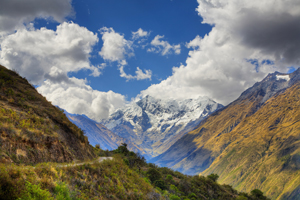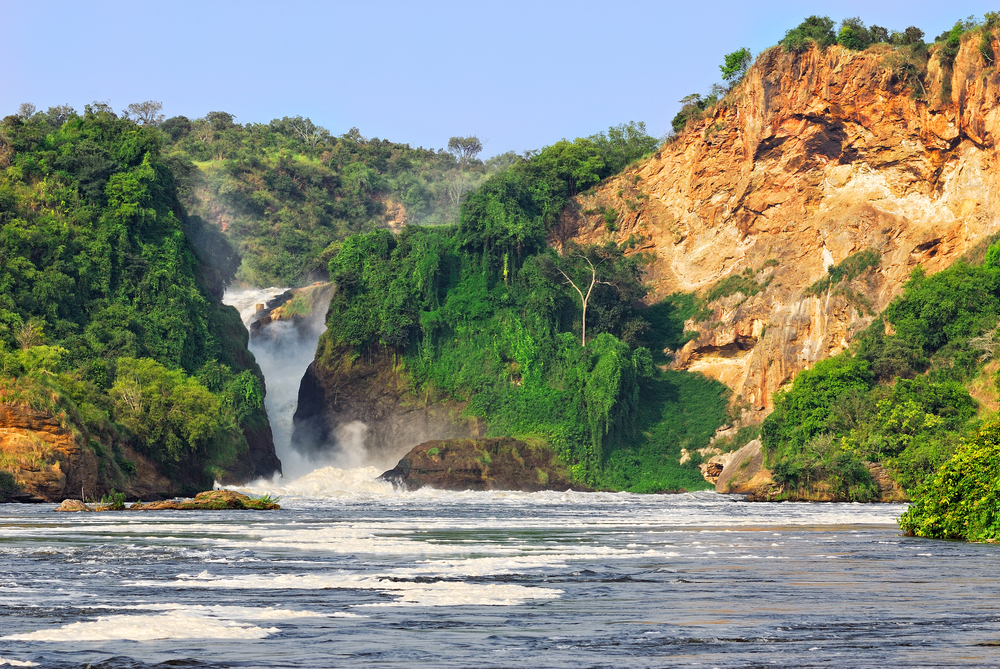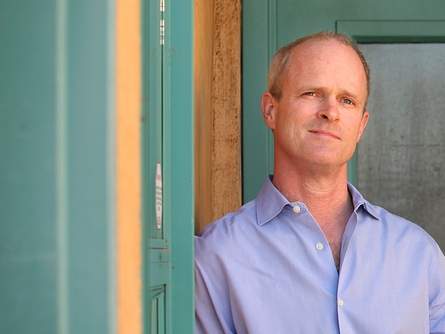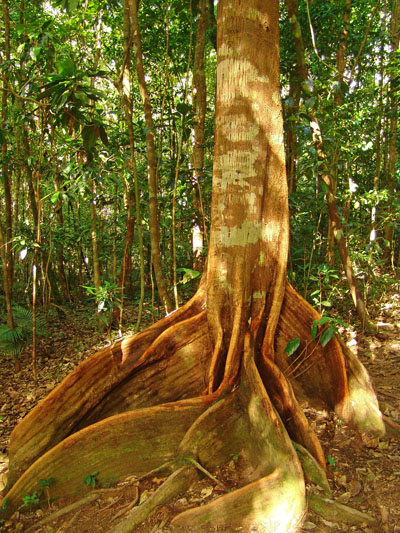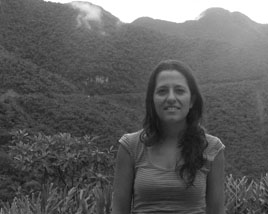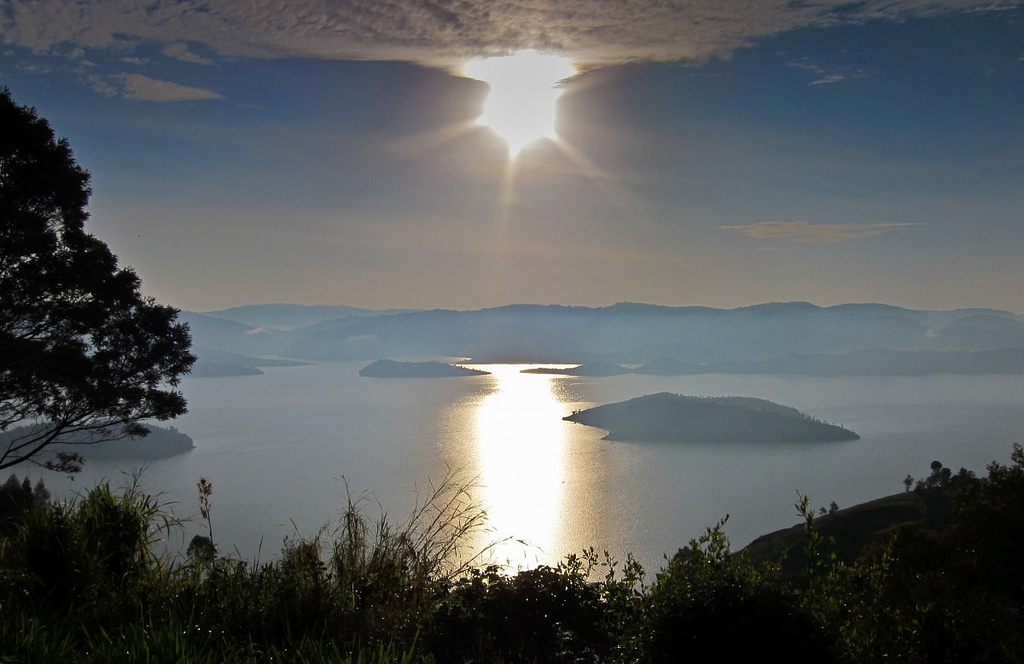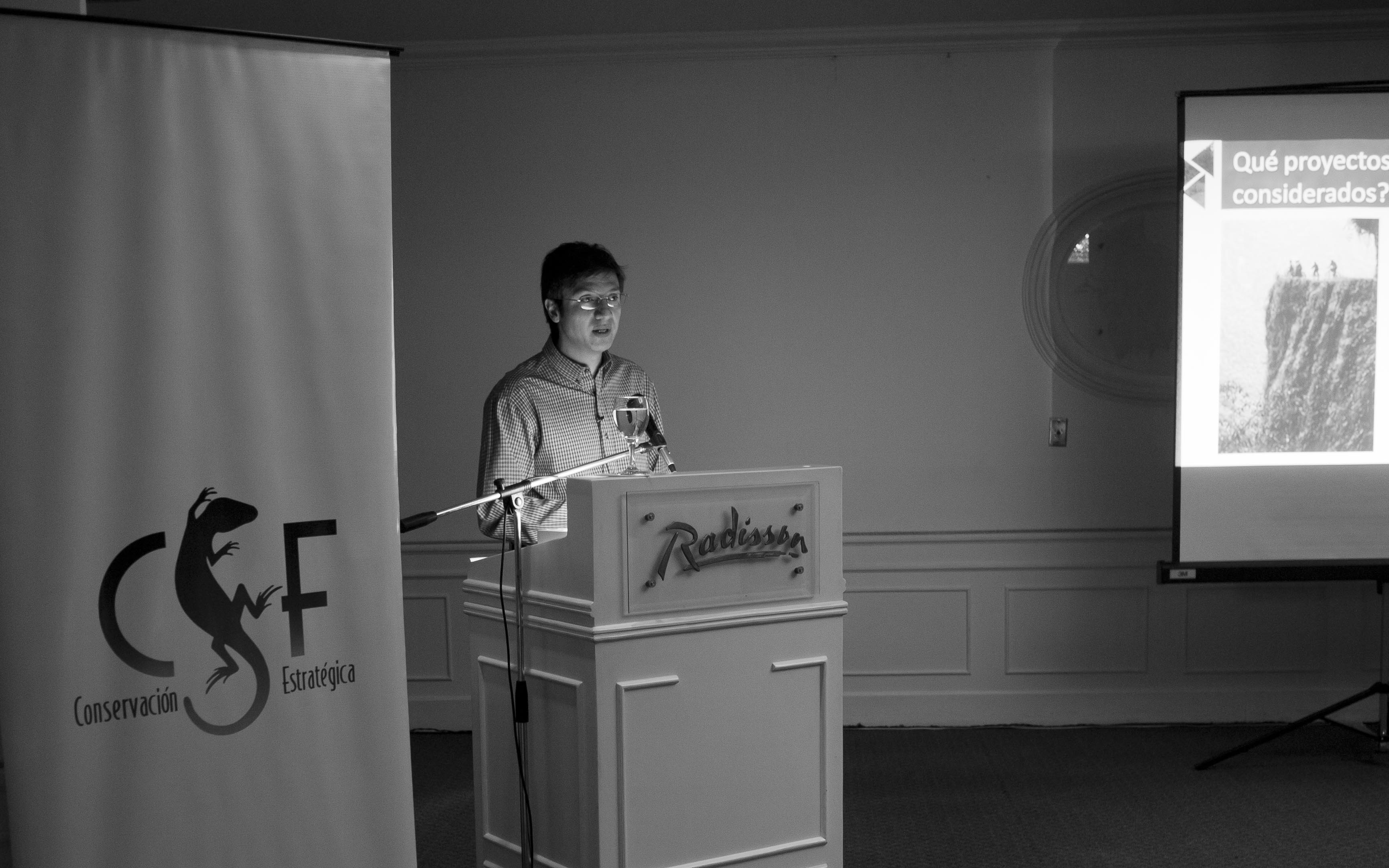News
Born in La Paz, Bolivia, Alfonso Malky Harb first came to CSF as a student in 2006, where he participated in the Madidi National Park course on economic tools for conservation. Two years later, Alfonso joined CSF as an Economic Analyst in the Bolivian office. With a Master's degree in Agricultural Economics from Catholic University of Chile, an undergraduate degree in Economics from the Bolivian Catholic University, and a diploma in Environmental and Social Research Methods from PIEB (Programa de Investigación Estratégica en Bolivia), he was a natural fit for CSF.
The Peruvian Ministry of the Environment (known by its Spanish acronym, MINAM) is working on a potentially groundbreaking policy to balance environmental protection and the development of big infrastructure projects. Specifically, the agency is formulating an approach to compensating for the impacts construction projects cause to natural ecosystems. Some degree of ecosystem impact is inevitable when new roads and dams are constructed; these damages have typically been overlooked in most countries. The Peruvian government is consulting with a range of stakeholders and experts, including CSF, to devise a policy that will give developers more clarity on their obligations, while creating real benefits for nature protection in the country.
The Albertine Rift is the 920-mile long western area of the East African Rift, covering parts of Uganda, the Democratic Republic of the Congo, Rwanda, Burundi and Tanzania. It runs from the northern end of Lake Albert to the southern end of Lake Tanganyika. Formed over millions of years, the Albertine Rift is the result of two tectonic plates that once collided and are now slowly moving apart. This geologic activity has created some of Africa's tallest mountains and many of the world's deepest lakes. In addition, the unique variation in elevations has contributed to the diversity of habitats that include wetlands, alpine grasslands, lowland and montane forests, and woodland savannas. Within these habitats, one finds everything from active glaciers to volcanoes.
Highlighting the announcement of the MacArthur Award for Creative and Effective Institutions, the front-page article profiles the history of CSF and the importance of our work globally.
“We are recognizing organizations that are doing phenomenal work, and often under the local radar screen,” Steve Cornelius of the MacArthur Foundation said. “They have identified a niche. They have simply been the main organization working in getting these economic principles out.”
Read the article here
Image credit: Christopher Chung/The Press Democrat
Today the John D. and Catherine T. MacArthur Foundation named Conservation Strategy Fund as a recipient of the MacArthur Award for Creative and Effective Institutions. The award recognizes CSF’s innovative work using economics to conserve the world’s most important ecosystems and provides us with a grant of $750,000. The MacArthur Award honors and supports our efforts to creatively address the the loss of unique natural ecosystems by equipping front-line environmentalists with skills to calculate and economic costs and benefits of solutions and thereby come up with answers that will actually work.
As CSF's new BUILD Program Operations Manager, Irene Burgués Arrea has found herself traveling all over the world in order to promote biodiversity conservation through infrastructure best practices. From her native country of Costa Rica, to the forest of Uganda (with stops in Bolivia and Brazil in between), Irene is jumping right in.
On January 17, CSF course graduate José Serra and CSF's Alfonso Malky presented an economic study of the proposed Inambari dam, designed to generate hydropower primarily for Brazilian consumers. The study, sponsored by the Wildlife Conservation Society's Peru office, examines the feasibility of the project, which would harness energy from an Amazon tributary in the country's southeastern jungle. Serra led the investigation, looking into the overall economic return, environmental costs, profits for the dam builder and impacts on various sectors of Peruvian society. Results showed that the project's feasibility depends on charging a relatively high electricity price and delivering benefits, in the form of flow control, to downstream dams in Brazil.
CSF's Irene Burgués and John Reid traveled to Uganda in November to establish our first long-term program in Africa. The program's initial focus will be on conserving ecosystems in the context of major infrastructure development in the Albertine Rift region shared by Uganda, Rwanda, Democratic Republic of Congo and Tanzania. The region is home to cloud forests, lowland rain forests and savannas, along with active volcanoes and endangered wildlife such as the mountain gorillas. CSF will work with government and NGOs to minimize the impact of new roads, dams and oil on these fragile resources. We are fortunate to have the partnership of the Uganda National Environmental Management Authority (NEMA) as we begin this process.
CSF will launch African and Himalayan initiatives and expand Andes-Amazon programs through $1.2 million agreement with Biodiversity Understanding in Infrastructure and Landscape Development (BUILD) program of USAID.
The United States Agency for International Development (USAID) recently announced a $1.2 million agreement with Conservation Strategy Fund (CSF) to launch a comprehensive initiative in central Africa, expand CSF’s programs in the Andes-Amazon region, and initiate a limited program in Asia’s Himalayan region. The goal of the program is to promote biodiversity conservation through infrastructure best practices.
HydroCalculator 2.0 and the Roads Filter have just been released for use on CSF's website.
Both were showcased in early September in La Paz where CSF Bolivia staff rolled out the two strategic tools to prioritize conservation efforts in the face of road and dam development in South America. The first, the HydroCalculator enables people to quickly analyze the pros and cons of hydroelectric projects distinguishing between those that are relatively clean and efficient and those that are expensive and destructive. The hydro presentation is the third in a series that included similar events in Medellín, Colombia and Brasília, Brazil and ultimately aims to avoid destructive dam building.


